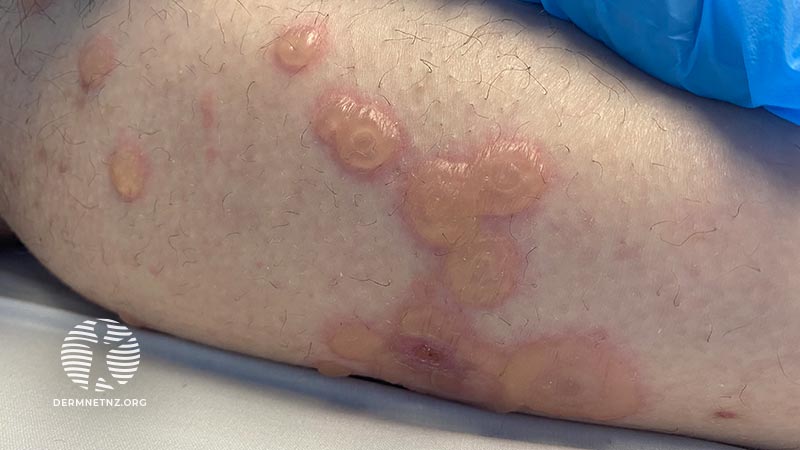Main menu
Common skin conditions

NEWS
Join DermNet PRO
Read more
Quick links
Author: Dr Maeve Herlihy, Dermatology Registrar, Ireland (2023)
Reviewing dermatologist: Dr Ian Coulson (2023).
Edited by the DermNet content department

A 77-year-old man was admitted to hospital with sepsis. He had a protracted hospital course with recurrent infections and was treated with multiple courses of antibiotics including intravenous vancomycin.
He has developed blisters, initially appearing in the groin, then progressing to the trunk and limbs.
The blisters are evident in the image. The bullae appeared to have a predilection for the inguinal folds, axillae, and flanks.
Diagnosis: Linear IgA bullous disease (LABD)
LABD is an autoimmune vesiculobullous disease. It can be idiopathic; secondary to medications or infections; or associated with some underlying disease (eg, inflammatory bowel disease, rheumatoid arthritis, malignancy).
Vancomycin is the most common drug associated with LABD. Lesions typically appear 24 hours to 15 days after the first dose.
Differential diagnoses:
Blisters are sometimes seen showing the”string of beads sign” with a large central blister surrounded by smaller peripheral ones as depicted in the image.
The gold standard for diagnosis is direct immunofluorescence of perilesional skin which demonstrates linear deposition of IgA at the dermoepidermal junction.
Skin biopsy shows subepidermal blisters with a predominantly neutrophilic dermal infiltrate.
In the case of drug-induced LABD, many cases will resolve with withdrawal of the offending agent.
In more severe or idiopathic cases, treatment options include: